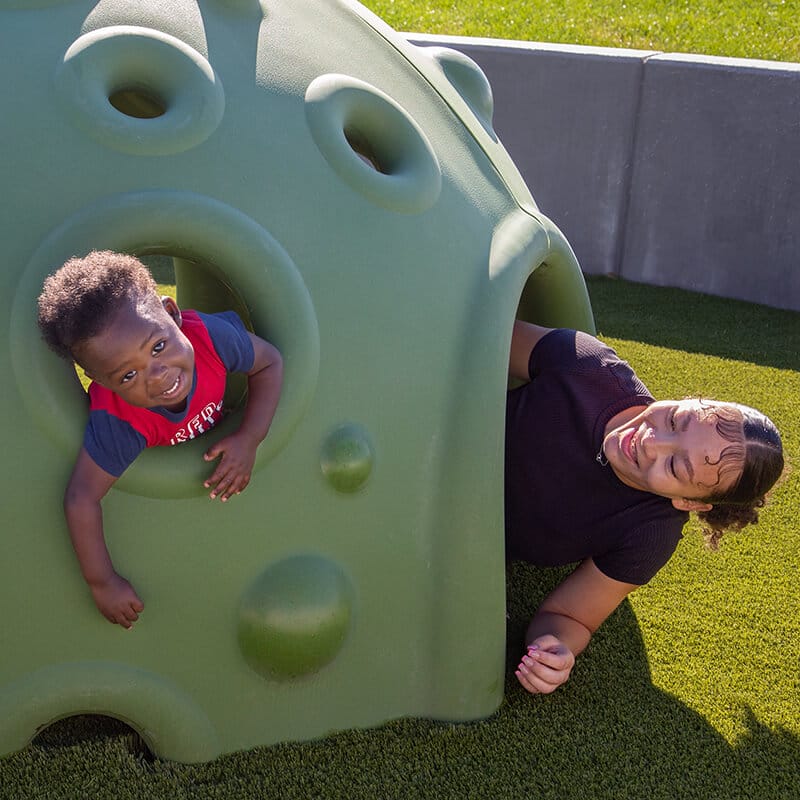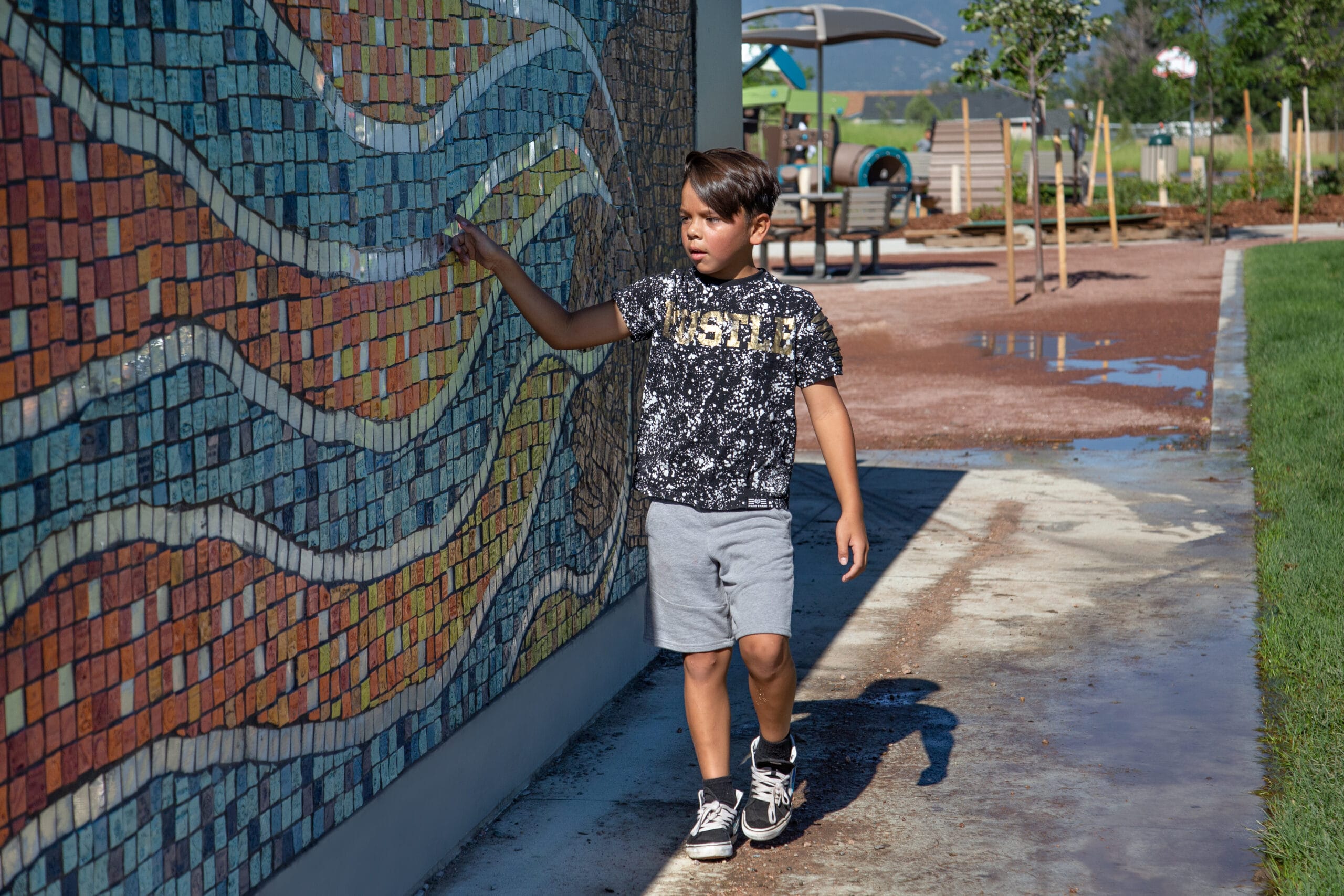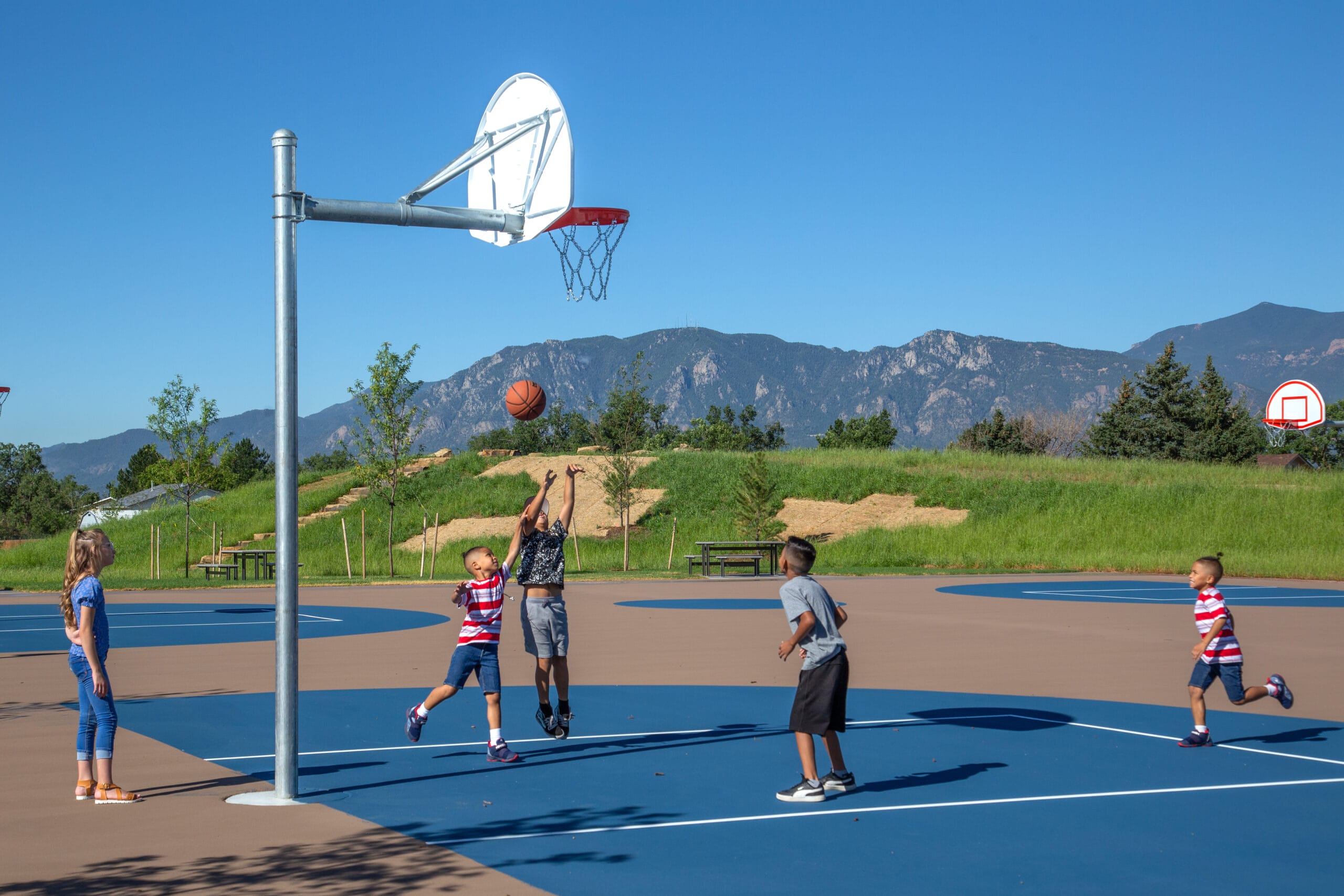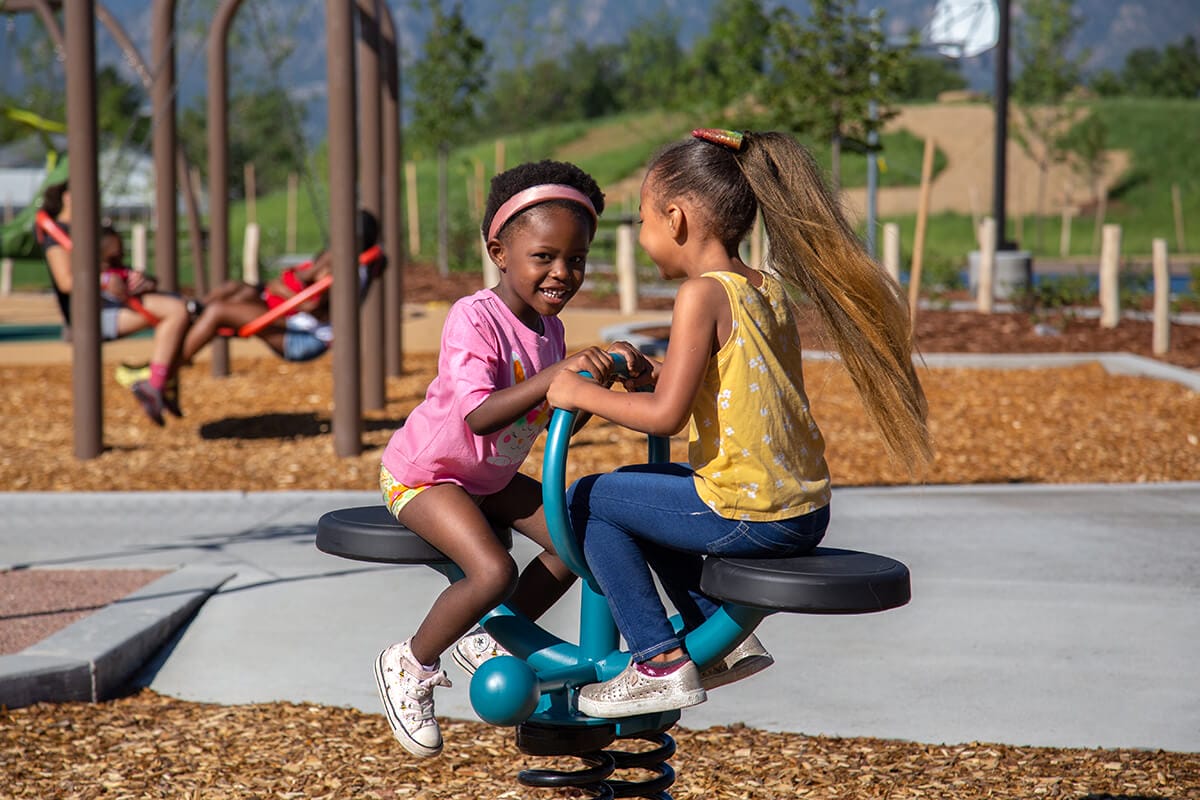Andre Dunn, a student at Colorado State University, remembers walking through Panorama Park almost every day as a youngster on his way to the adjacent middle school. “It was just weeds and broken glass and fire ant hills,” he recalled. “There was a small playground and a baseball field, and the field was in terrible condition. My friends and I were looking over our shoulders all the time.”
In August, a newly renovated Panorama Park reopened to the public in southeast Colorado Springs, presenting residents with 13.5 acres packed with amenities and brimming with trees, shrubs, and native grasses. Trust for Public Land teamed up with partners such as community-led initiative RISE Southeast and the City of Colorado Springs to transform the barren park through an $8.5 million renovation, the largest park overhaul in the city’s history.
Now when Dunn goes home from college to visit his family, he looks forward to visiting the park with his younger siblings—ages 9, 6 and 1—in tow.
“I’ve been there several times since the opening and every time there has been an event, whether a concert, farmers’ market, barbecue, or trick-or-treating,” says Dunn, who majors in environmental sociology. “This project is not benefiting the rich; it is benefiting the people who really need it. My little brothers and sister are going to experience this completely differently than I did.”
“This project . . . is benefiting the people who really need it. My little brothers and sister are going to experience this completely differently than I did.” – Andre Dunn, former Colorado Springs resident
Indeed, the new park addresses the area’s historical and persistent inequities, from limited access to safe outdoor spaces to exposure to higher temperatures due to the urban heat island effect, in which stone and pavement absorb and radiate heat. According to Emily Patterson, TPL’s Parks for People managing director, southeast Colorado Springs is about 7 degrees hotter than surrounding neighborhoods. And life expectancies in the neighborhood are 10 to 12 years shorter than in other areas of the city.
The newly renovated park was informed and inspired by the surrounding community. Trust for Public Land partnered with RISE Southeast to lead the engagement process, meeting with students, families, and senior citizens to brainstorm ideas for the park. We also worked with the City of Colorado Springs on design and construction. To counter the heat, the park now boasts 250 newly planted trees and 20 shade structures.
One-third of Americans, including 28 million children, lack safe, easy access to a park within a 10-minute walk of home. Urge your senators to pass the Outdoors for All Act to create parks and enhance outdoor recreational opportunities!

Among the amenities are a bike park, splashpad, skateboarding area, hammock zone, climbing boulder, and fitness station; on-site bathrooms, sports fields, and a great lawn—all within view of majestic Pikes Peak and the surrounding mountains. A universally accessible playground was designed not only to comply with the Americans with Disabilities Act but also to specifically engage children with autism.
One feature is the Quiet Nook, a structure resembling a green igloo with round window openings. It is designed to provide a calm space for children who need a break from the action.
In addition, there is a sweeping art mosaic in vibrant hues of orange, yellow, and blue. Jeresneyka Rose, a Southeast CORE Fellow at Trust for Public Land in Colorado, explains that each tile was hand decorated by a member of the local community: “Over 7,000 tiles make up a vibrant mural that represents the community’s identity,” she says. “With the themes of ‘stepping into our power’ and ‘sharing our light,’ the mural celebrates the diversity and unity of southeast Colorado Springs.”
Carol Ferrara, 75, says the new park is already proving to be a magnet for residents of all ages. She has joined a walking group that meets in the park every week. Her 6-year-old granddaughter, Eliza, spent long, happy days in the splashpad this summer and now climbs inside a dome-shaped play structure. And Ferrara spies teenage boys whom she once babysat running full throttle on the basketball courts.
One afternoon after school, she and her husband watched as Eliza played amid dozens of middle school students who were cavorting on a piece of play equipment that resembles a merry-go-round. “My granddaughter kept going to it and those kids were so good to her and so careful with her,” Ferrara says. “It was a neat experience.”

A young visitor to Panorama Park explores a colorful mosaic reflecting community values. Photo: Olivedia Productions
Previously, she avoided the park. “There was broken play equipment, along with drug activity and even people having sex in the open,” she recalled. “I didn’t let Eliza go. It was hard because it was the closest park to us. Now it’s so green and we just go.”
At the reopening on August 20, representatives of community groups, elected officials, and—of course—residents turned out to celebrate the vibrant new green space. Among them was Ashley Cornelius, the Pikes Peak poet laureate, who wrote a poem for the occasion.
Against a soundscape of squealing children, Cornelius reflected on the resilience of the community and the promise of the park. “Meet me in the place where we gather in love and light, a once-desolate land now reinvigorated by the passion of the people,” she read. “We did not fix a community, nor give it something it never had. We shined a light on the hearts of the southeast of Colorado Springs.”
Then she exhorted those in attendance to reap all the benefits of their new park. “This is collective work, but we are not finished,” Cornelius went on. “We need you to play. Use imagination on open field and jungle gyms. Pick up basketball games and leave everything on the courts. Experience joy with abandon . . . Exercise and move your body . . . Find yourself in the shade next to loved ones. Create poetic magic in the presence of nature. Fantasize about ideas that will change the world. Explore here. Play here. Heal here.”
We certainly couldn’t have said it better.
Lisa W. Foderaro is a senior writer and researcher for Trust for Public Land. Previously, she was a reporter for the New York Times, where she covered parks and the environment.

In Colorado Springs, a once-desolate 13-acre park now teems with residents reaping the benefits of a close-to-home space for exercise and relaxation. Become a member and help us connect everyone to the outdoors.

